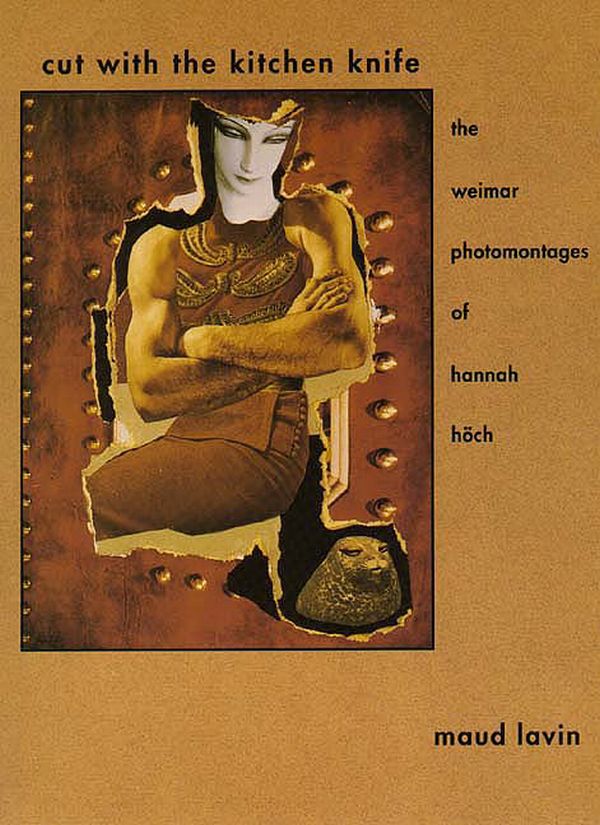Howard Rheingold: What Life Can Compare with This? Sitting Alone at the Window, I Watch the Flowers Bloom, the Leaves Fall, the Seasons Come and Go (1968)
Filed under thesis | Tags: · consciousness, machine, technology, transcendence

“Mind-blowing and its methods are discussed. Data suitable for statistical analysis are submitted therein.” (Abstract)
Bachelor’s thesis
Presented to The Division of Philosophy, Psychology, and Education, Reed College, Portland/OR, May 1968
77+k pages
Scanned and OCRed by Stanford library, Feb 2012
via Renée Turner
Commentary: Gary Wolf (2002), Howard Rheingold (2005).
PDF (46 MB)
Comment (0)Maud Lavin: Cut With the Kitchen Knife: The Weimar Photomontages of Hannah Höch (1993)
Filed under book | Tags: · art, art history, avant-garde, collage, dada, gender, mass media, montage, photomontage, weimar republic, women

“The women of Weimar Germany had an uneasy alliance with modernity: while they experienced cultural liberation after World War I, these “New Women” still faced restrictions in their earning power, political participation, and reproductive freedom. Images of women in newspapers, films, magazines, and fine art of the 1920s reflected their ambiguous social role, for the women who were pictured working in factories, wearing androgynous fashions, or enjoying urban nightlife seemed to be at once empowered and ornamental, both consumers and products of the new culture. In this book Maud Lavin investigates the multi-layered social construction of femininity in the mass culture of Weimar Germany, focusing on the intriguing photomontages of the avant-garde artist Hannah Höch.
Höch, a member of the Berlin Dada group, was recognized as one of the most innovative practitioners of photomontage. In such works as Dada-Ernst and Cut with the Kitchen Knife, she reconstructed the wonderfully seductive mass media images of the New Woman with their appeal intact but with their contours fractured in order to expose the contradictions of the new female stereotypes. Her photomontages exhibit a disturbing tension between pleasure and anger, confidence and anxiety. In Weimar—as today—says Lavin, the representation of women in the mass media took on a political meaning when it challenged the distribution of power in society. Höch’s work provides important evidence of the necessity for women to shape the production and reception of the images that redefine their role.”
Publisher Yale University Press, 1993
ISBN 0300047665, 9780300047660
xvii+260 pages
Reviews: Johanna Drucker (Art Journal 1993), Susan Sensemann (Design Issues 1994), Greil Marcus (2014).
PDF (assembled from scans on author’s Academia.edu page, 24 MB, no OCR)
Comment (0)Laboria Cuboniks: Xenofeminism: A Politics for Alienation (2015) [EN, DE, ES, RO, IT, RU, SK, SL, SW, FR, PT, FA, PL, DK]
Filed under manifesto | Tags: · alienation, capitalism, feminism, gender, manifesto, politics, technology

“Ours is a world in vertigo. It is a world that swarms with technological mediation, interlacing our daily lives with abstraction, virtuality, and complexity. XF constructs a feminism adapted to these realities: a feminism of unprecedented cunning, scale, and vision; a future in which the realization of gender justice and feminist emancipation contribute to a universalist politics assembled from the needs of every human, cutting across race, ability, economic standing, and geographical position. No more futureless repetition on the treadmill of capital, no more submission to the drudgery of labour, productive and reproductive alike, no more reification of the given masked as critique. Our future requires depetrification. XF is not a bid for revolution, but a wager on the long game of history, demanding imagination, dexterity and persistence.” (opening paragraph)
First published June 2015
GNU Public License
Commentary: Isabel de Sena (2019).
Xenofeminism: A Politics for Alienation: HTML, TXT, PDF (English)
Xenofeminismus. Eine Politik für die Entfremdung: HTML, TXT, PDF (German)
Xenofeminismo. Una política por la alienación: HTML, TXT, PDF (Spanish)
More translations (Romanian, Italian, Russian, Slovak, Slovenian, Swedish, French, Portuguese, Persian, Polish, Danish; added on 2019-3-6)

